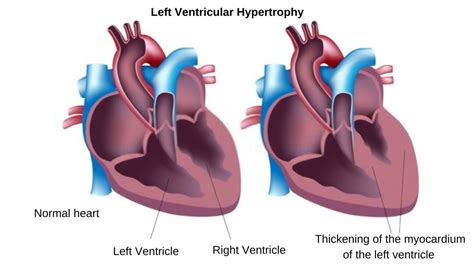lv syndrome | left ventricular hypertrophy weight loss lv syndrome Left ventricular noncompaction cardiomyopathy (LVNC) happens when the left ventricle has pieces of muscle that extend into the chamber. See symptoms for LVNC. Updated on: Feb 23, 2024. All info on Great Wall Chinese Restaurant in Las Vegas - Call to book a table. View the menu, check prices, find on the map, see photos and ratings.
0 · lower left ventricular valve
1 · left ventricular hypertrophy weight loss
2 · left ventricular hypertrophy leg pain
3 · left ventricular hypertrophy images
Louis Vuitton Shanghai Plaza 66. Shop 136, Plaza 661266 Nanjing West Road. 200040 Shanghai, China. (+86) 400 6588 555.
Left ventricular non-compaction (LVNC) cardiomyopathy is a condition where your lower left heart chamber (left ventricle) doesn’t develop properly. Instead of being firm and smooth, the left .Left ventricular noncompaction cardiomyopathy (LVNC) happens when the left ventricle has pieces of muscle that extend into the chamber. See symptoms for LVNC.
Left ventricular noncompaction (LVNC, also known as noncompaction cardiomyopathy [1]) is a complex myocardial disorder with a distinct phenotype characterized . Left ventricular noncompaction cardiomyopathy (LVNC) is a rare congenital heart problem. It develops from faulty development of your left ventricle. The left ventricle is the main heart.
Left Ventricular Non-Compaction Cardiomyopathy (LVNC): symptoms, diagnosis, and management options. Join our support group for guidance and information. Left ventricular noncompaction cardiomyopathy (LVNC) remains a largely underinvestigated and poorly understood diagnosis. The number of peer‐reviewed articles . The prognosis of left ventricular noncompaction (LVNC) remains elusive despite its recognition as a clinical entity for >30 years. We sought to identify clinical and imaging . An enlarged or thickened heart — a condition doctors call left-ventricular (LV) hypertrophy — can lead to heart failure. It also may double the risk of dementia and cognitive .
Left ventricular non-compaction (LVNC) is a rare cardiomyopathy that usually affects the left ventricle in which the two-layered myocardium has an abnormally thick sponge-like, trabecular layer and a thinner, compacted myocardial layer.
Uncontrolled high blood pressure is the most common cause of left ventricular hypertrophy. Complications include irregular heart rhythms, called arrhythmias, and heart failure. Treatment of left ventricular hypertrophy depends on the cause. Treatment may include medications or surgery.
Left ventricular non-compaction (LVNC) cardiomyopathy is a condition where your lower left heart chamber (left ventricle) doesn’t develop properly. Instead of being firm and smooth, the left ventricle is spongy and thick.Left ventricular noncompaction cardiomyopathy (LVNC) happens when the left ventricle has pieces of muscle that extend into the chamber. See symptoms for LVNC. Left ventricular noncompaction (LVNC, also known as noncompaction cardiomyopathy [1]) is a complex myocardial disorder with a distinct phenotype characterized by prominent LV trabeculae and deep intertrabecular recesses [2,3]. Left ventricular noncompaction cardiomyopathy (LVNC) is a rare congenital heart problem. It develops from faulty development of your left ventricle. The left ventricle is the main heart.
Left Ventricular Non-Compaction Cardiomyopathy (LVNC): symptoms, diagnosis, and management options. Join our support group for guidance and information. Left ventricular noncompaction cardiomyopathy (LVNC) remains a largely underinvestigated and poorly understood diagnosis. The number of peer‐reviewed articles published on LVNC has grown dramatically over the past decade. The prognosis of left ventricular noncompaction (LVNC) remains elusive despite its recognition as a clinical entity for >30 years. We sought to identify clinical and imaging characteristics and risk factors for mortality in patients with LVNC. An enlarged or thickened heart — a condition doctors call left-ventricular (LV) hypertrophy — can lead to heart failure. It also may double the risk of dementia and cognitive impairment .
Left ventricular non-compaction (LVNC) is a rare cardiomyopathy that usually affects the left ventricle in which the two-layered myocardium has an abnormally thick sponge-like, trabecular layer and a thinner, compacted myocardial layer. Uncontrolled high blood pressure is the most common cause of left ventricular hypertrophy. Complications include irregular heart rhythms, called arrhythmias, and heart failure. Treatment of left ventricular hypertrophy depends on the cause. Treatment may include medications or surgery.Left ventricular non-compaction (LVNC) cardiomyopathy is a condition where your lower left heart chamber (left ventricle) doesn’t develop properly. Instead of being firm and smooth, the left ventricle is spongy and thick.

Left ventricular noncompaction cardiomyopathy (LVNC) happens when the left ventricle has pieces of muscle that extend into the chamber. See symptoms for LVNC. Left ventricular noncompaction (LVNC, also known as noncompaction cardiomyopathy [1]) is a complex myocardial disorder with a distinct phenotype characterized by prominent LV trabeculae and deep intertrabecular recesses [2,3]. Left ventricular noncompaction cardiomyopathy (LVNC) is a rare congenital heart problem. It develops from faulty development of your left ventricle. The left ventricle is the main heart.
Left Ventricular Non-Compaction Cardiomyopathy (LVNC): symptoms, diagnosis, and management options. Join our support group for guidance and information. Left ventricular noncompaction cardiomyopathy (LVNC) remains a largely underinvestigated and poorly understood diagnosis. The number of peer‐reviewed articles published on LVNC has grown dramatically over the past decade.
lower left ventricular valve
left ventricular hypertrophy weight loss
The prognosis of left ventricular noncompaction (LVNC) remains elusive despite its recognition as a clinical entity for >30 years. We sought to identify clinical and imaging characteristics and risk factors for mortality in patients with LVNC.

left ventricular hypertrophy leg pain
left ventricular hypertrophy images

Yingying Lv graduated with honors from Fuzhou University with a B.S. degree in chemistry, and Fudan University with a PhD degree in inorganic chemistry, respectively. In 2018, Yingying joined Tian lab and started her postdoctoral research in the James Franck Institute, University of Chicago.
lv syndrome|left ventricular hypertrophy weight loss




























